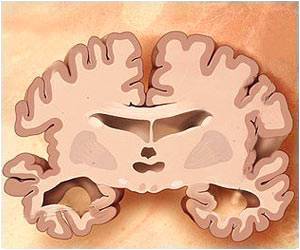- An enzyme overproduced in the brains of Alzheimer’s patients creates a blockade that shuts off genes and causes memory loss
- Inhibiting the enzyme HDAC2 can reverse memory loss in Alzheimer’s. HDAC2 inhibitors can also affect other members of HDAC
- A new approach has been found to target HDAC2, by blocking its interaction with a binding partner called Sp3
New Way to Treat Memory Loss in Alzheimer's
The new method found by the MIT research team targets HDAC2 by blocking its interaction with a binding partner called Sp3 (Savoia-Pomilio SP.3). Blocking this mechanism could treat memory loss in Alzheimer’s patientsThis is the first time we have found a specific mechanism by which HDAC2 regulates synaptic gene expression, said Li-Huei Tsai, senior author of the study and director of MIT's Picower Institute for Learning and Memory.
Memorable Interactions
In a study conducted in 2007, Tsai discovered that blocking HDAC activity could reverse memory loss in mice. There are several classes of HDACs. The primary function of HDAC is to modify histones - protein components of chromatin, acting as spools around the DNA. These modifications condense chromatin, making genes in that stretch of DNA less likely to be expressed.The research team found that HDAC2 is responsible for the blockade of memory-linked genes. They also found that HDAC2 is elevated in human Alzheimer’s patients and in several mouse models of the disease.
HDAC2 serves as a master regulator of memory gene expression. Elevated HDAC2 causes an epigenetic blockade of the expression of those memory genes in Alzheimer’s.
"If we can remove the blockade by inhibiting the HDAC2 activity or reducing HDAC2 levels, then we can remove the blockade and restore expression of all these genes necessary for learning and memory," said Tsai.
Specific Targets to Reverse Memory Loss
The research team conducted a study to identify proteins that help the enzyme bind to genes required for memory formation. Initially, they analyzed gene expression data from postmortem brain samples taken from people who did not have Alzheimer’s disease, including 28 brains with high HDAC2 levels and 35 with low levels. They identified more than 2,000 genes whose levels closely matched HDAC2 levels, suggesting that those genes might work together with HDAC2.Based on the function of these genes and their interaction with HDAC2, they identified three of genes for further testing. The tests showed that a gene called Sp3 is necessary to recruit HDAC2 to block memory-linked genes.
Study in a Mouse Model of Alzheimer's Disease
The research team further explored what would happen if they lowered Sp3 levels in a mouse model of Alzheimer’s disease. They found that deactivating Sp3 also restored the mice’s ability to form long-term memories.The research team hopes to develop a drug in the form of a small protein or chemical compound to potentially restore memory in Alzheimer’s patients.
The team identified the section of the HDAC2 protein that binds to Sp3. They also engineered neurons to overproduce HDAC2 fragment to block Sp3 from binding HDAC2 and releasing the blockade of memory-linked genes. The fragment did not interfere with cell proliferation, suggesting a new targeted approach that would not have the adverse side effects of more general HDAC inhibitors.
The protein fragment used to block the interaction has about 90 amino acids, which would be too large to use as a drug. So research team hopes to identify a smaller segment to disrupt the Sp3-HDAC2 interaction.
The research team would further investigate some of the other genes that were found to correlate with HDAC2 to identify other drug targets. They also plan to explore whether this approach could be useful in treating other disorders that involve elevated levels of HDAC2, such as posttraumatic stress disorder.
The findings of the study are published in the journal Cell Reports.
Reference:
- Reversing Alzheimer’s gene ‘blockade’ can restore memory, other cognitive functions - (http://news.mit.edu/2012/alzheimers-hdac2-inhibitors-0301)















